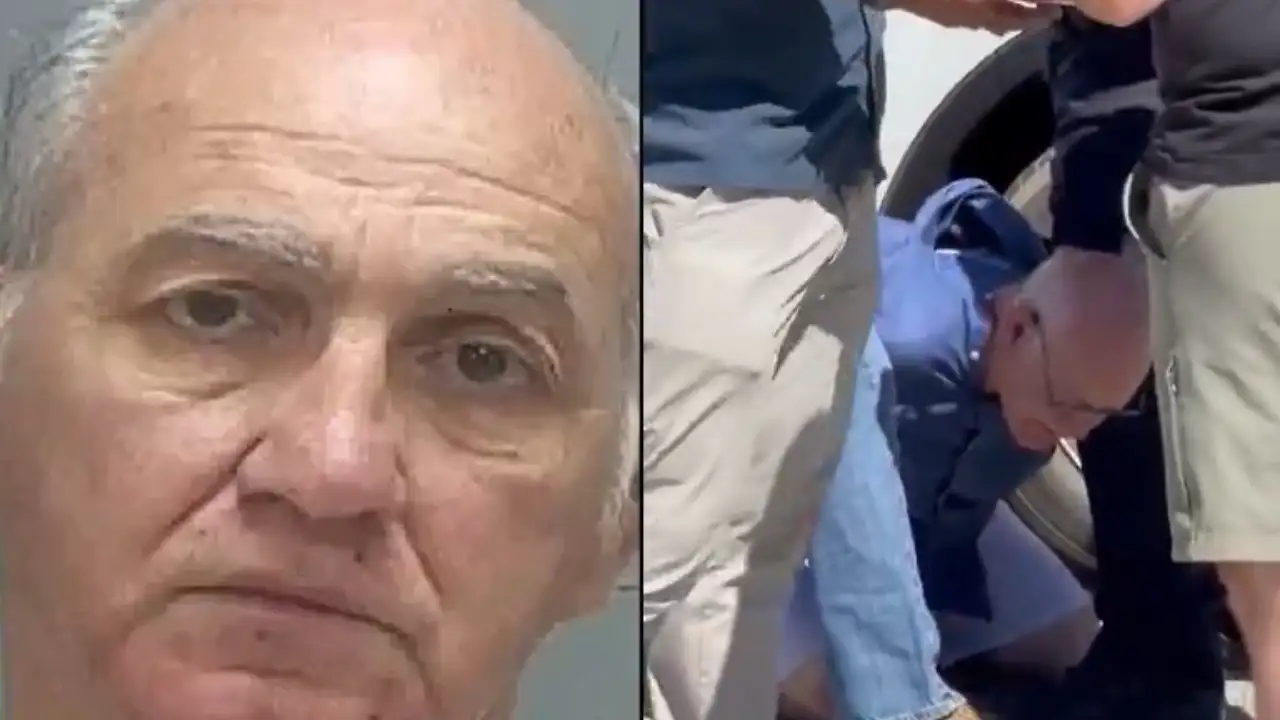
NGOCSTIP – George Zinn became an unexpected figure of public interest after a chaotic scene unfolded at Utah Valley University. During a high-profile speaking event where Charlie Kirk was tragically shot, Zinn was seen being detained by police. Footage of the arrest went viral almost immediately, especially because Zinn appeared with his pants down and seemingly confessed to the shooting. His image spread like wildfire across social media as many believed he was the suspect. However, police later clarified that George Zinn was not the shooter and was instead charged with obstruction. This incident added yet another chapter to a long history of erratic public behavior that has made Zinn both a familiar face and a disruptive presence at political events across Utah. His past involvement in various bizarre disturbances and his peculiar reputation have only fueled the public’s curiosity about who he really is and what his motivations might be.
George Zinn has long been known in Utah’s political circles as an eccentric agitator. His name frequently appears in police records due to his repeated disruptions at public events including political rallies film festivals and protests. Zinn’s behavior has included nonsensical shouting public nudity and even threats that resulted in arrests. Most notably in 2013 Zinn threatened to bomb the Salt Lake City Marathon leading to a prison sentence of one year.
Despite this serious charge, many people see Zinn’s actions more as disturbances than actual threats. Salt Lake County District Attorney Sim Gill called him a gadfly during a media interview. Gill described a pattern of strange behavior that usually avoids violence or serious harm. Zinn regularly voices strong libertarian and conservative beliefs with passionate, erratic energy. His deep ideological frustration often fuels his public outbursts and disruptive appearances. He frequently clashes with police and event staff at rallies and town halls across Utah. Most confrontations arise when Zinn pushes his views loudly and ignores event rules. Authorities know his behavior but rarely classify him as dangerous unless safety becomes a concern. People continue to debate whether Zinn needs legal punishment or mental health support. His unpredictable presence keeps raising concerns at political gatherings and public forums statewide.
“Read about: Drunk Maniac Slams Into 16-Year-Old Girl on NYC Sidewalk After Lewd Taunts to Her Mom!”
George Zinn stood near the scene right after Charlie Kirk was shot. Police detained him after he loudly claimed responsibility. Videos showed officers leading him away while people shouted and cursed around him. One officer said Zinn had admitted to the shooting, creating more confusion. Later, investigators confirmed his statement was false and misleading. He received obstruction charges due to his disruption and misleading confession.
The incident went viral, fueling discussions about protest rights and mental health. Some people blamed law enforcement for detaining the wrong person too quickly. Others criticized Zinn for inserting himself into a sensitive moment. Many questioned how he approached the scene without suspicion from security. The university event quickly became a symbol of confusion during crisis. Some observers focused on Zinn’s long history of disruptive public actions. Others raised concerns about his mental condition and past behavior. This moment deepened national debates about safety at political events. Zinn’s story now represents a strange intersection of activism, confusion, and personal instability.
Mental health issues have been frequently cited in past cases involving George Zinn. Prosecutors have reportedly recommended treatment multiple times due to his repeated confrontational behavior and disregard for legal boundaries. Despite these recommendations Zinn has often refused to cooperate with mental health evaluations or programs. His refusal to seek or accept help has raised concerns among officials and community members alike.
His behavior shows a pattern of escalating public outbursts and increasingly bizarre arrests such as standing in traffic and refusing to move until jailed. Law enforcement officers and district attorneys alike have expressed frustration over the limitations they face in mandating treatment. His arrest at Utah Valley University further emphasized the risks of untreated mental health issues intersecting with highly volatile situations. Though his actions have been mostly nonviolent they continue to draw attention from authorities media and citizens who are unsure whether to view Zinn as a dangerous threat or a troubled eccentric.
George Zinn appeared at the scene where someone shot Charlie Kirk during a public event. His disruptive behavior immediately attracted national attention after the arrest footage went viral. Zinn did not commit the shooting, but his actions triggered widespread confusion and online outrage. He falsely confessed and behaved chaotically, which led many people to identify him as the suspect. The public quickly shared the arrest video, fueling speculation and drama just moments after the incident.
This situation showed how misinformation can spread fast in crisis situations before facts are properly verified. It highlighted the importance of careful assessment before forming conclusions during tense, unclear incidents. Zinn’s case also illustrates gaps in systems addressing individuals with persistent mental health challenges. He has been previously involved in disruptive protests and has ignored past recommendations for treatment. His actions continue to blur the line between protest rights, personal instability, and public safety concerns.
This article is sourced from nypost.com and for more details you can read at ngocstip.org
Writer: Sarah Azhari
Editor: Anisa